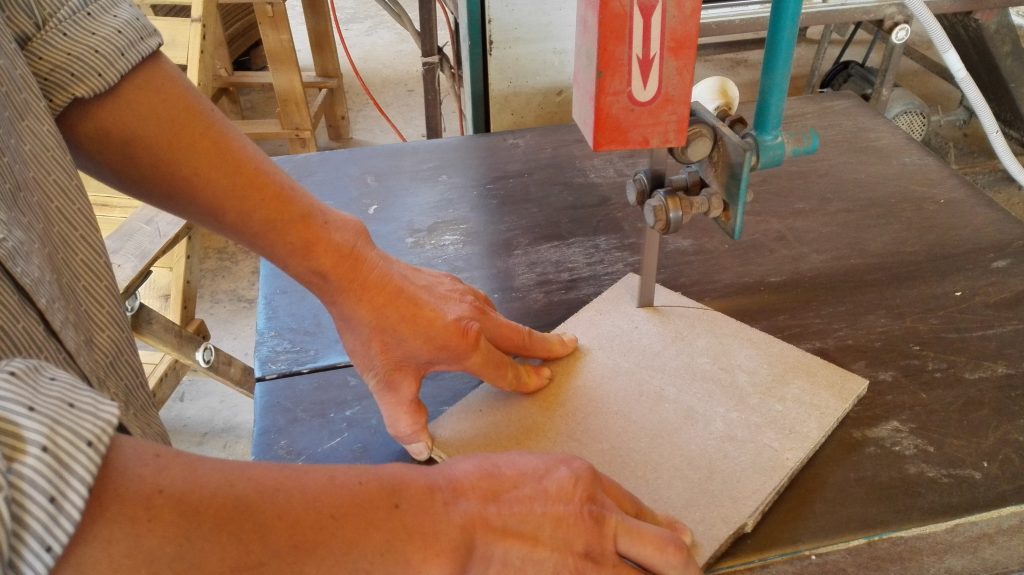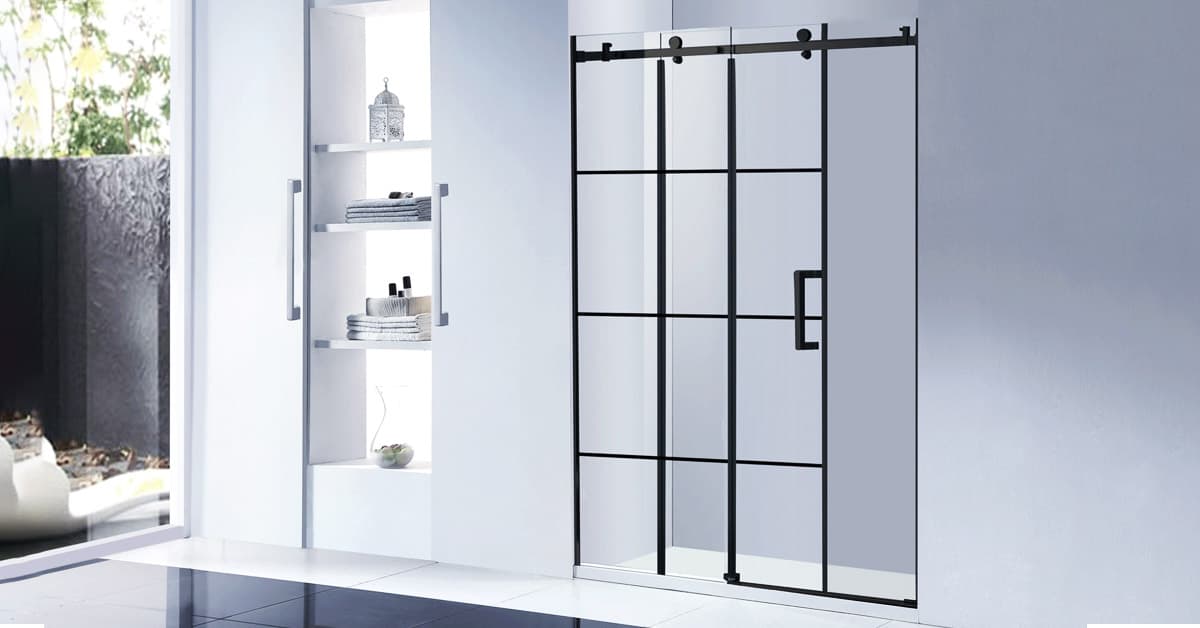Imagine stepping into our Unity Metal shower tray, ready to relax and wash away the stresses of the day, only to find a damaged tray that threatens to ruin our peaceful oasis. Don’t despair! We are here to guide you through the process of repairing our Unity Metal shower tray so we can get back to enjoying those soothing showers. In this article, we will show you how to identify the damage, gather the necessary tools and materials, and expertly repair any cracks or chips. Let’s dive in and restore our Unity Metal shower tray to its former glory!
Identifying the Damage
First, you’ll want to start by examining the shower tray for any signs of damage. When we inspect the shower tray, we should look out for any cracks, chips, or leaks. These are common problems that can occur over time due to wear and tear or accidents. If there are any visible damages on the surface of the tray, it is essential to address them promptly before they worsen.
To begin with, check if there are any cracks on the shower tray. Cracks can be small hairline fractures or more significant splits in the material. Run your fingers along the surface gently to feel for any irregularities. If you notice any cracks, take note of their size and location as this information will be helpful when repairing them later.
Next, closely examine the edges of the tray for chips or breaks. Sometimes, these damages can occur due to heavy objects falling onto the tray or accidental impacts during use. Chips may appear as small missing pieces on the edge of the tray and can lead to further deterioration if left untreated.
Additionally, keep an eye out for any signs of leakage around the drain area or corners of the shower tray. Water stains on adjacent walls or floors could indicate a leak from underneath. Leaks not only cause water damage but also affect structural integrity over time.

Gathering the Necessary Tools and Materials
Before starting, make sure you have all the tools and materials you’ll need. Repairing a shower tray requires a few essential items that will make the process easier and more efficient. First, gather a utility knife to remove any silicone or caulk sealing the damaged area. This will allow you to assess the extent of the damage and proceed with the repair. Next, grab some sandpaper or a sanding block to smooth out any rough edges or surfaces on the tray. Depending on the type of material your shower tray is made of, you may also need epoxy resin or fiberglass repair kit to fix cracks or holes in the tray.
In addition to these tools, it’s crucial to have safety equipment on hand. Don’t forget about protective gloves and safety glasses to keep yourself safe during the repair process. These items will shield your hands from sharp edges and prevent any debris from getting into your eyes.
Once you’ve gathered all your tools, it’s time to think about materials for repairing the shower tray. Depending on what needs fixing, you might need silicone sealant or caulk for resealing joints and seams after completing repairs. If there are small chips or scratches in your tray’s surface, consider purchasing an acrylic repair kit specific for shower trays.
Removing the Old Sealant or Caulking
When it comes to removing old sealant or caulking from a shower tray, we have found that the best removal method is using a sharp utility knife or a silicone caulk remover tool. These tools allow us to carefully cut and scrape away the old sealant without causing any damage to the surrounding surfaces. However, it is important for us to take safety precautions such as wearing gloves and eye protection to protect ourselves from any potential injuries.
Best Removal Method
To remove the shower tray, you’ll want to start by disconnecting the drain pipe. This step is crucial to ensure a smooth and hassle-free removal process. We recommend using a wrench or pliers to loosen the fittings and carefully detach the pipe from the tray. Once the drain pipe is disconnected, you can move on to removing any screws or fasteners that are securing the tray in place. It’s important to be cautious during this step, as some trays may be heavy or require multiple people for safe removal. With all screws removed, gently lift and tilt the tray to free it from its position. Remember to check for any additional attachments before fully lifting it out.
Safety Precautions to Take?
Make sure you wear sturdy gloves and closed-toe shoes to protect yourself from any sharp edges or potential falling objects during the removal process. Safety should always be a top priority when undertaking any home repair project. In addition to wearing protective gear, it is important to follow proper procedures to minimize the risk of accidents or injuries. Here are some safety precautions you should take when repairing a shower tray:
| Safety Precautions | Explanation |
|---|---|
| Turn off water supply | This will prevent any accidental leaks or flooding. |
| Disconnect power | Electric showers should be disconnected before starting. |
| Clear work area | Remove any obstructions or hazards that could cause trips. |
| Use appropriate tools | Using the right tools for the job ensures safe handling. |
| Work with a partner | Having someone assist you can make the task easier and safer. |
Repairing Cracks or Chips in the Tray
You can easily fix cracks or chips in the shower tray using a repair kit. Here’s how we recommend doing it:
- Clean the area: Before starting the repair process, make sure to clean the cracked or chipped area thoroughly. Use a mild detergent and warm water to remove any dirt, soap scum, or grime that may be present. Dry the area completely before proceeding.
- Prepare the repair kit: Most repair kits come with everything you need to fix the cracks or chips in your shower tray. Follow the instructions provided by the manufacturer to mix any necessary components together. This usually involves combining a resin and hardener.
- Apply the mixture: Using a putty knife or similar tool, carefully apply the mixture to the cracked or chipped area of your shower tray. Make sure to spread it evenly and fill in any gaps completely.
- Smooth and blend: After applying the mixture, use a damp cloth or sponge to smooth out any rough edges and blend it seamlessly with the surrounding surface of your shower tray.
Reapplying Sealant or Caulking
When it comes to reapplying sealant or caulking in our shower tray, there are a few key points we need to keep in mind. First and foremost, the importance of maintenance cannot be overstated. Regularly checking and maintaining the sealant ensures that water doesn’t seep through and cause damage to the surrounding areas. Secondly, choosing the right sealant is crucial for long-lasting results. We should opt for a high-quality product that is specifically designed for wet areas and offers excellent waterproofing properties. Lastly, proper application techniques play a significant role in ensuring an effective seal. Taking our time, following instructions carefully, and applying the sealant evenly will help us achieve a durable and watertight result.
Importance of Maintenance
Regular maintenance is crucial for keeping your shower tray in good condition. As homeowners ourselves, we understand the importance of taking care of our homes and preventing costly repairs down the line. Here are four essential maintenance tasks you should prioritize to keep your shower tray looking great:
- Clean regularly: Use a non-abrasive cleaner and a soft cloth or sponge to remove any soap scum, grime, or stains from the surface of your shower tray.
- Check for leaks: Inspect the area around your shower tray for any signs of water leakage. Look for damp spots, discoloration, or musty odors that could indicate a leaky tray.
- Keep it dry: After each use, wipe down your shower tray with a towel to prevent water buildup and excess moisture that can lead to mold or mildew growth.
- Avoid harsh chemicals: Harsh cleaning agents can damage the finish of your shower tray. Stick to mild detergents or natural cleaners to protect its integrity.
Choosing the Right Sealant
Now that we understand the importance of regular maintenance for our shower trays, let’s move on to the next step: choosing the right sealant. When it comes to repairing a shower tray, selecting the correct sealant is crucial in ensuring a long-lasting and watertight solution. We’ve learned from experience that not all sealants are created equal, so it’s important to do our research and find one specifically designed for bathroom applications. Look for a sealant that is waterproof, mold-resistant, and flexible to accommodate any movements or shifts in the tray over time. Additionally, opt for a product that is easy to apply and provides a strong bond with various materials like ceramic or acrylic. By investing in the right sealant, we can ensure our shower tray repair will withstand the test of time.
Proper Application Techniques
To achieve a long-lasting and watertight solution, it’s important to apply the selected sealant properly. Here are four key techniques we recommend:
- Clean and dry: Before applying the sealant, make sure the shower tray is thoroughly cleaned and dried. Any dust or moisture can affect its adhesion.
- Use a caulking gun: To ensure even application, use a caulking gun instead of squeezing the sealant directly from the tube. This will give you better control over the amount being dispensed.
- Apply in a continuous bead: Start at one end of the shower tray and slowly move along, applying a continuous bead of sealant in one smooth motion. Avoid stopping and starting as this can create weak points.
- Smooth it out: After applying the sealant, use a wet finger or caulk smoothing tool to smooth out any bumps or ridges. This will help create an even finish and improve its effectiveness.
Testing for Leaks
Check if there are any leaks in the shower tray by running water and observing for any signs of leakage. This step is crucial to ensure that you identify any potential issues before proceeding with the repair process. To start, we turn on the water and let it flow into the shower tray. As the water fills up, we carefully examine all areas of the tray for any signs of leakage.
We pay close attention to corners, edges, and seams where leaks are most likely to occur. If there is a leak, we’ll notice water dripping or pooling outside of the tray. Additionally, we might observe discoloration or dampness on surrounding walls or floors. These visible signs indicate that there is indeed a leak present.
Once we have identified a leak, it’s important to pinpoint its exact location. We trace back the source by inspecting all possible areas where water could be escaping from – such as cracks, loose seals, or damaged tiles. By locating the specific point of leakage, we can efficiently address and fix the problem.
In some cases, leaks may not be immediately noticeable during this initial test. In such instances, it’s advisable to repeat this process multiple times while paying close attention for even subtle signs of leakage. It’s better to err on the side of caution and thoroughly ensure that no hidden leaks go unnoticed.
Remember that timely detection and repair of leaks in your shower tray can prevent further damage to your bathroom infrastructure like rotting subfloors or mold growth. So take this step seriously and address any leaks promptly before moving forward with repairing your shower tray.
Maintaining and Preventing Future Damage
Maintaining and preventing future damage is crucial to ensure the longevity of our bathroom infrastructure. As homeowners, we must take proactive steps to keep our shower trays in good condition. Here are four important measures we can implement:
- Regular Cleaning: We should clean our shower trays regularly to prevent the accumulation of dirt, soap scum, and mold. Using a mild cleanser and a non-abrasive sponge or cloth, we can gently scrub the surface and rinse it thoroughly. This simple routine will help maintain the tray’s appearance and prevent any potential damage caused by grime buildup.
- Sealant Inspection: Checking the integrity of the sealant around our shower tray is essential for preventing leaks and water damage. Over time, sealant can deteriorate or crack, allowing water to seep through. By inspecting and reapplying sealant when necessary, we can ensure that our tray remains watertight and avoid costly repairs in the future.
- Mindful Usage: We need to be mindful of how we use our shower trays to minimize unnecessary strain or impact on them. Avoiding excessive weight on the tray’s edges or stepping directly onto it can help prevent cracks or fractures from occurring.
- Prompt Repairs: If any signs of damage appear, such as cracks or chips in the tray’s surface, it is crucial to address them promptly. Ignoring these issues may lead to further deterioration and potentially more expensive repairs later on.
Frequently Asked Questions
Can I Repair a Shower Tray Without Removing the Old Sealant or Caulking?
We can repair a shower tray without removing the old sealant or caulking, saving time and effort. By carefully assessing the damage and using appropriate repair materials, we can fix the tray effectively.
How Long Does It Typically Take for the New Sealant or Caulking to Cure?
Typically, it takes a few hours for the new sealant or caulking to cure. However, this can vary depending on factors such as humidity and temperature. It’s best to follow the manufacturer’s instructions for specific curing times.
What Type of Sealant or Caulking Should I Use for Repairing a Shower Tray?
For repairing a shower tray, we recommend using a silicone-based sealant or caulk. It provides excellent water resistance and flexibility. Make sure to choose a product specifically designed for bathroom applications.
Can I Use a DIY Repair Kit to Fix Cracks or Chips in the Shower Tray?
Yes, we can use a DIY repair kit to fix cracks or chips in the shower tray. It’s an affordable and convenient option that allows us to tackle minor repairs ourselves without hiring professionals.
How Often Should I Check for and Reapply Sealant or Caulking on the Shower Tray?
We should regularly check and reapply sealant or caulking on the shower tray to prevent any water damage. It’s like giving our shower a protective shield, ensuring it stays in good condition for longer.
Conclusion
In conclusion, repairing a shower tray can be a daunting task, but with the right tools and materials, we, as Unity Metal, can conquer it. By identifying the damage and taking necessary steps to fix cracks or chips, we ensure our Unity Metal shower tray remains a sanctuary of relaxation. Reapplying sealant or caulking acts as armor against future leaks. Let’s not forget the importance of maintenance to prevent future damage. So let’s roll up our sleeves and show that Unity Metal shower tray who’s boss! Together, we’ll make our showers sparkle like diamonds in the sun!


